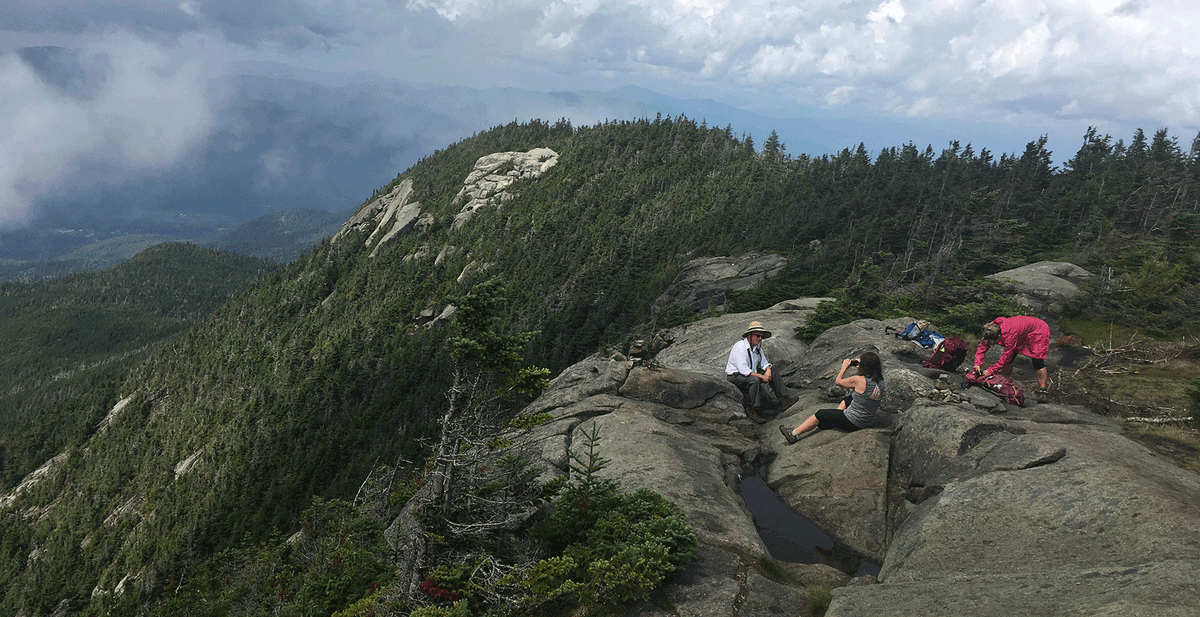2019 saw a number of key victories that advanced protections for the Adirondack Park. Protect the Adirondacks not only played a key role in helping to win these new protections, but we also worked to put into place the advocacy, legal and research stepping stones that will lead to greater victories in the future. Protect the Adirondacks implements its mission through grassroots organizing, research, advocacy, legal action, education, and water quality monitoring. Here’s a recap of the highlights of our work in 2019!
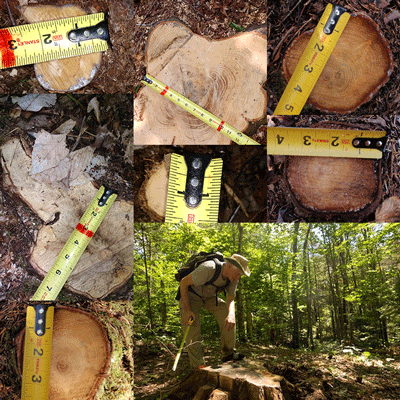 Major legal victory to protect forever wild: Our work to defend the forever wild Forest Preserve, the people’s land, was highlighted by a July 3rd decision by the Appellate Division, Third Department, in Albany, which reversed a decision by a lower court, and ruled 4-1 in favor of Protect the Adirondacks that cutting of over 25,000 trees on the Forest Preserve violated the State Constitution.
Major legal victory to protect forever wild: Our work to defend the forever wild Forest Preserve, the people’s land, was highlighted by a July 3rd decision by the Appellate Division, Third Department, in Albany, which reversed a decision by a lower court, and ruled 4-1 in favor of Protect the Adirondacks that cutting of over 25,000 trees on the Forest Preserve violated the State Constitution.
This decision was six years in the making. We launched this lawsuit in 2013 to challenge the construction of the first of what was projected to be hundreds of miles of new wide, road-like Class II community connector snowmobile trails in the public Forest Preserve. These trails represented the largest potential expansion of motor vehicle use in the history of the Forest Preserve. They are built with heavy machinery, graded flat for miles, and are fundamentally different from other types of trails on the Forest Preserve. We believed that this planned network of road-like trails violated the State Constitution because of the massive terrain alteration and tree cutting required. If these trails are allowed to be built out it will forever change the wild forest character of the parts of the Forest Preserve where they were approved. During the trial and litigation, Protect the Adirondacks counted, photographed, and documented the destruction of over 25,000 trees on the Forest Preserve.
The public Forest Preserve is protected by the NYS Constitution in Article 14, Section 1, which reads: “The lands of the state, now owned or hereafter acquired, constituting the forest preserve as now fixed by law, shall be forever kept as wild forest lands. They shall not be leased, sold or exchanged, or be taken by any corporation, public or private, nor shall the timber thereon be sold, removed or destroyed.”
The court case now moves on to the Court of Appeals, New York’s highest court. Preliminary jurisdictional questions are now being considered before the court, and we expect a briefing schedule to be set soon. Protect the Adirondacks will vigorously defend its victory at the Appellate Division against an appeal by state agencies. It is likely that there will be a decision at some point in late 2020. To read more about this lawsuit, see more articles here, here, here and here.
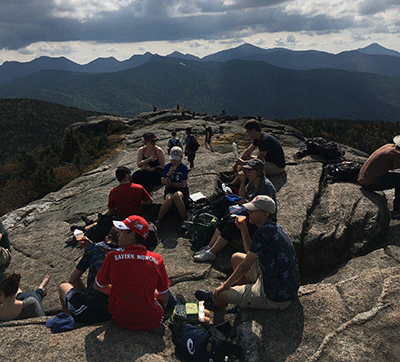 We need to build a comprehensive management program for the High Peaks: The High Peaks Wilderness is in the midst of a major boom in the number of hikers, which has stressed the region’s management. Protect the Adirondacks has been advocating for a new comprehensive management program for the High Peaks, Hurricane Mountain and Giant Mountain Wilderness areas. We believe that comprehensive management combines sustainable trail building, public education, facilities for parking and camping, and scientific monitoring of natural resources and public use impacts.
We need to build a comprehensive management program for the High Peaks: The High Peaks Wilderness is in the midst of a major boom in the number of hikers, which has stressed the region’s management. Protect the Adirondacks has been advocating for a new comprehensive management program for the High Peaks, Hurricane Mountain and Giant Mountain Wilderness areas. We believe that comprehensive management combines sustainable trail building, public education, facilities for parking and camping, and scientific monitoring of natural resources and public use impacts.
The failure of the Cuomo Administration to invest in the High Peaks Wilderness and associated Wilderness areas is mystifying. Why year after year does the High Peaks receive scant attention and funding? Why is it that High Peaks Wilderness management is done on a shoestring. The Cuomo Administration just spent $25 million to build the new Frontier Town Campground and day use area. When will the state make a $25 million investment in the trails and public education of the High Peaks Wilderness? The need for enhanced improved, comprehensive management of the High Peaks area is well known. The High Peaks Wilderness is a world-class landscape that merits world-class management. It’s high time for the State of New York to invest in the management of the High Peaks.
Read more about PROTECT’s advocacy work to build a comprehensive management program for the High Peaks Wilderness here, here and here.
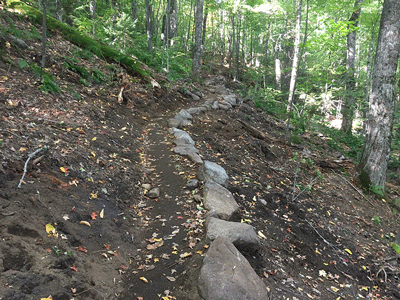 We need sustainable hiking trails in the High Peaks Wilderness and across the Adirondack Forest Preserve: Trail building in the High Peaks Wilderness should be part of a new comprehensive management program that integrates public education, facilities for parking and camping, and scientific monitoring of natural resources and public use impacts. In many ways the sustainable trail is the link that threads through and ties together effective wilderness management. Protect the Adirondacks has campaigned for years for more trail building by state agencies. The past two years have seen the first state trail crews in years organized in the High Peaks Wilderness. This work has allowed the state to look at construction of new types of trails. The new “contour” trails under construction on Cascade Mountain and Mount Van Hoevenberg help us glimpse a positive future that fulfills the idea of active wilderness management where trails blend in with and enhance wilderness values, rather than undermine them. As things stand now, the new trails on Cascade Mountain and Mount Van Hoevenberg lay down an example, where theory is turned into practice, and where the art and science of natural resource stewardship and public outdoor recreational management in a Wilderness area are significantly advanced in a way that we have not seen before in the Adirondack Park.
We need sustainable hiking trails in the High Peaks Wilderness and across the Adirondack Forest Preserve: Trail building in the High Peaks Wilderness should be part of a new comprehensive management program that integrates public education, facilities for parking and camping, and scientific monitoring of natural resources and public use impacts. In many ways the sustainable trail is the link that threads through and ties together effective wilderness management. Protect the Adirondacks has campaigned for years for more trail building by state agencies. The past two years have seen the first state trail crews in years organized in the High Peaks Wilderness. This work has allowed the state to look at construction of new types of trails. The new “contour” trails under construction on Cascade Mountain and Mount Van Hoevenberg help us glimpse a positive future that fulfills the idea of active wilderness management where trails blend in with and enhance wilderness values, rather than undermine them. As things stand now, the new trails on Cascade Mountain and Mount Van Hoevenberg lay down an example, where theory is turned into practice, and where the art and science of natural resource stewardship and public outdoor recreational management in a Wilderness area are significantly advanced in a way that we have not seen before in the Adirondack Park.
Click here to read more about new sustainable trails.
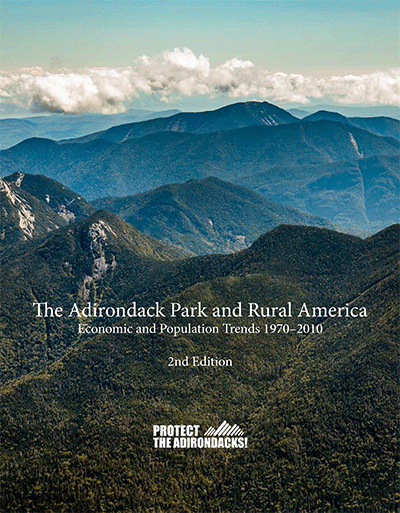 Vital research on the Adirondack economy and population trends: Protect the Adirondacks released its new report The Adirondack Park and Rural America: Economic and Population Trends 1970-2010. Long-term economic and population trends of Adirondack communities, starting in 1970 and ending in 2010, were compared in this report. This period coincided with the establishment of regional land-use zoning and a period of sustained land protection in the Adirondack Park. This report analyzes standard economic indicators, including median household income, per capita income, the poverty rate, and the rates of employment and self-employment. It looks at standard population indicators, including population growth, median age, and the ratio of children to adults of childbearing age. The report also examines age groups to compare the experiences of young adults of college age, career age adults, and retirees. In all cases, the experiences of Adirondack communities are compared with other rural areas.
Vital research on the Adirondack economy and population trends: Protect the Adirondacks released its new report The Adirondack Park and Rural America: Economic and Population Trends 1970-2010. Long-term economic and population trends of Adirondack communities, starting in 1970 and ending in 2010, were compared in this report. This period coincided with the establishment of regional land-use zoning and a period of sustained land protection in the Adirondack Park. This report analyzes standard economic indicators, including median household income, per capita income, the poverty rate, and the rates of employment and self-employment. It looks at standard population indicators, including population growth, median age, and the ratio of children to adults of childbearing age. The report also examines age groups to compare the experiences of young adults of college age, career age adults, and retirees. In all cases, the experiences of Adirondack communities are compared with other rural areas.
If there were negative economic impacts from environmental protections in the Adirondack Park, the region would stand out as significantly different from other rural areas in trends for median household income, per capita income, poverty rate, and rates of employment and self-employment as well as population indicators over this 40 year time period. Any negative trends due to environmental protection would be clearly evident over the past 40 years. Far from unique, the economic and population challenges facing the Adirondacks are the norm in Rural America. In many cases, Adirondack communities experienced economic growth that was far better than that of vast areas of Rural America.
The data and analysis of this report make it clear that it is time to stop blaming whatever economic distress we find in the Adirondack Park on environmental protection, either in purchase of land for the Forest Preserve or conservation easement, or through limiting development on private land. We need to stop blaming the Park. The Adirondack Park and its residents and businesses are part of Rural America and subject to all the population and economic pressures experienced by similar regions throughout the United States. Adirondack economic and population trends are fully consistent with the experience of other rural areas across the U.S. What is special about the Adirondack Park is the world-class protected landscape of mountains, forests, lakes and rivers. The abundant, protected natural resources are a key asset and advantage for the region and sets the Adirondack Park apart from most other rural areas. Click here to read more about this landmark report.
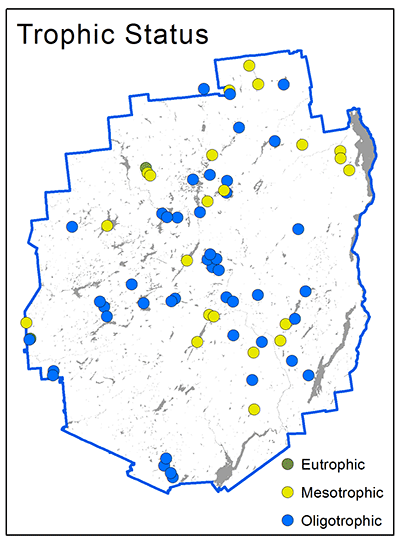 2019 was the 22nd year of the Adirondack Lake Assessment Program: The Adirondack Lake Assessment Program (ALAP) was established in 1998 to provide water quality data to shoreowners and to develop a comprehensive, long-term database of water quality conditions in the Adirondack Park. 2019 marks the 22nd year of the program. ALAP is the largest volunteer-driven water quality monitoring program in the Adirondack Park, and is a partnership between Protect the Adirondacks and the Paul Smith’s College Adirondack Watershed Institute (AWI), along with more than 200 volunteers across the Adirondacks. ALAP has grown into one of the best long-term citizen science programs of its kind in New York and the eastern U.S.
2019 was the 22nd year of the Adirondack Lake Assessment Program: The Adirondack Lake Assessment Program (ALAP) was established in 1998 to provide water quality data to shoreowners and to develop a comprehensive, long-term database of water quality conditions in the Adirondack Park. 2019 marks the 22nd year of the program. ALAP is the largest volunteer-driven water quality monitoring program in the Adirondack Park, and is a partnership between Protect the Adirondacks and the Paul Smith’s College Adirondack Watershed Institute (AWI), along with more than 200 volunteers across the Adirondacks. ALAP has grown into one of the best long-term citizen science programs of its kind in New York and the eastern U.S.
The information collected as part of ALAP is used to identify causes of concern that may need action (e.g. faulty septic systems) and to conduct regional analysis to understand how various stressors that impact our waters. For example, ALAP data was used to assess the effects of road salting on lakes in a paper that formed the scientific basis for discussions with state and local officials on curbing the use of road salt to protect our environment.
There are over 3,000 lakes in the Adirondack Park, with fewer than 200 being monitored on a regular basis. Monitoring is important for understanding how lakes change over time, and is particularly valuable for developed lakes. The continued enjoyment of these lakes by property owners and visitors is heavily dependent on water quality, as is the value of shoreline property. Lake monitoring helps protect this resource we value so much. In 2019, over 65 lakes and ponds were monitored across the Adirondack Park. This study group included a range of lakes and ponds, from those that are heavily developed with high amounts of roads and impervious areas to those that are lightly developed or are not developed at all in the public Forest Preserve.
Water samples are analyzed by AWI staff for pH, alkalinity, conductivity, color, nitrogen, total phosphorus, chlorophyll-a, transparency, chloride, sodium, and calcium. The results of analyses are written into a report and provided to the public. Click here for the 2018 ALAP report. With this information, lake shore associations, landowners, community groups and government leaders are more informed to make decisions about the future of their waterways.
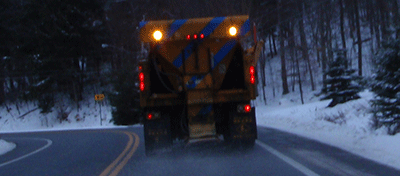 Advocacy to stop road salt pollution in the Adirondack Park: A major issue that is confronting many Adirondack communities is the degradation of lakes and ponds, in addition to wells for private residences, due to salt pollution from winter road maintenance practices. Research has found that while many major Adirondack lakes have stable or high water quality, they are also among the most highly polluted in the state from chloride and sodium.
Advocacy to stop road salt pollution in the Adirondack Park: A major issue that is confronting many Adirondack communities is the degradation of lakes and ponds, in addition to wells for private residences, due to salt pollution from winter road maintenance practices. Research has found that while many major Adirondack lakes have stable or high water quality, they are also among the most highly polluted in the state from chloride and sodium.
Recent studies by Paul Smith’s College Adirondack Watershed Institute (AWI) that looked at residential wells have found a high number that have become contaminated due to salt pollution. In 2019, Protect the Adirondacks advocated for changes to highway management practices as well as new state laws to reduce or eliminate the use of road salt. PROTECT will continue to press for reduction in salt use across the Adirondacks.
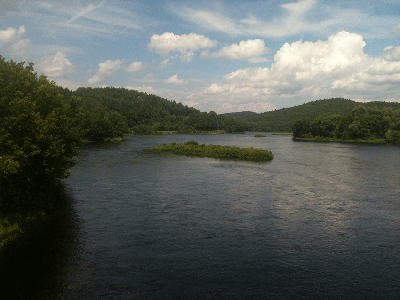 Advocacy for a new public multi-use trail: A tremendous opportunity exists for the communities in the southern Adirondack Park to build what would be one of the great multi-use public recreation trails in New York and the eastern U.S. Protect the Adirondacks is advocating for the transition of the dormant 55-mile-long Saratoga and North Creek Railway to a public multiuse trail that would connect more than a dozen communities between Saratoga Springs and North Creek. More than 30 miles of this trail would be located along the Hudson River, where each bend in the river provides a different great view.
Advocacy for a new public multi-use trail: A tremendous opportunity exists for the communities in the southern Adirondack Park to build what would be one of the great multi-use public recreation trails in New York and the eastern U.S. Protect the Adirondacks is advocating for the transition of the dormant 55-mile-long Saratoga and North Creek Railway to a public multiuse trail that would connect more than a dozen communities between Saratoga Springs and North Creek. More than 30 miles of this trail would be located along the Hudson River, where each bend in the river provides a different great view.
Protect the Adirondacks is advocating for state planning monies to conduct a public assessment about the viability of this new trail system. A new public trail from Saratoga Springs to North Creek would connect dozens of small communities such as Lake Luzerne, Stony Creek, Thurman, Riparius, The Glen, and Warrensburg, among other hamlets and businesses on the rail line. We believe that this new trail would be very popular and heavily used. It could stimulate new opportunities for communities and businesses up and down its route. Running on the banks of the Hudson River, this trail would delight as one of the loveliest public trail systems in New York, bringing people through scene after scene of wild natural beauty. From bases in Saratoga Springs or North Creek, bicyclists and walkers, among other users, would enjoy a stunning trip with long unbroken sections at the north end.
Click here to read more about this tremendous opportunity to build a new public multi-use trail in the southern Adirondacks. Click here to read a letter making the case for conversion to Governor Cuomo.
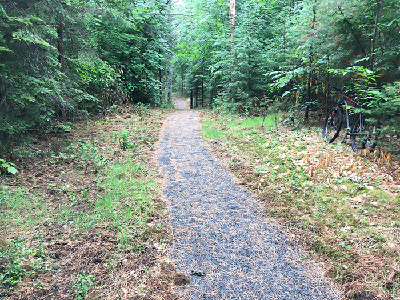 PROTECT pushes for an investigation of trail building violations by state agencies in the Hammond Pond Wild Forest Area: The Hammond Pond Wild Forest Area Unit Management Plan was revised in early 2019 to designate new multi-use trails that could be linked with the trails at the Frontier Town Campground. The trails on the east side of Route 9 in the Hammond Pond Wild Forest were constructed as some kind of weird administrative annexation of a Wild Forest area into an Intensive Use/state campground area. The new multi-use trail in the Hammond Pond Wild Forest is a bike, hiking, horse and class II snowmobile trail and looks nothing like a typical trail in a Wild Forest area.
PROTECT pushes for an investigation of trail building violations by state agencies in the Hammond Pond Wild Forest Area: The Hammond Pond Wild Forest Area Unit Management Plan was revised in early 2019 to designate new multi-use trails that could be linked with the trails at the Frontier Town Campground. The trails on the east side of Route 9 in the Hammond Pond Wild Forest were constructed as some kind of weird administrative annexation of a Wild Forest area into an Intensive Use/state campground area. The new multi-use trail in the Hammond Pond Wild Forest is a bike, hiking, horse and class II snowmobile trail and looks nothing like a typical trail in a Wild Forest area.
The newly built trail in the Hammond Pond Wild Forest east of Route 9 was apparently built with the same design as the trails that snaked through and around the Frontier Town Campground. It has the same four- or five-foot-wide wide gravel tread area in the center of the trail and wide trailsides planted with grass. Outside of a few trails that have been built in Wild Forest and Intensive Use areas in the Forest Preserve that were specially designed to facilitate use by disabled individuals, such as Icehouse Pond or Helldiver Pond trails in the Moose River Plains, and feature crushed stone pathways for wheelchair use, there are not many of these kinds of the trails. Many tons of small crushed stone were used in the Hammond Pond Wild Forest area to build this trail. The raised bed in the center of this trail gives this “trail” a distinct road-like feel, with long grassy shoulders running along each side. There are many questions for the APA and DEC about how such a trail could be legally constructed.
The Hammond Pond Wild Forest Unit Management Plan (UMP) does not find anything about a class II/multi-use trail with tons and tons of crushed stone. While the DEC had carte blanche to build any kind of trail it wanted on the Frontier Town Campground conservation easement lands, it is bounded on the Forest Preserve by the rules of the Adirondack Park State Land Master Plan. Despite the legal differences on the two land use areas, there appears to be no difference at all between the trail sections on easement lands and the trail sections in Wild Forest lands. Click here and here for more information on this apparent violation. State agencies are stonewalling and refusing to release information.
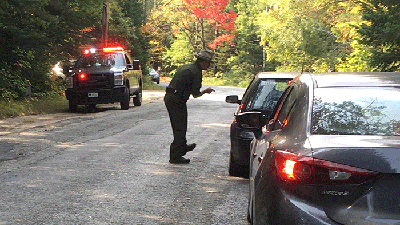 Sticking up for Forest Rangers: Protect the Adirondacks believes it is essential to increase the number of Forest Rangers and other personnel, such as assistant Rangers and backcountry stewards, to respond to these pressures. Ranger staffing for the entire state is currently around 135 positions. In 2019, Protect the Adirondacks pushed for Ranger staffing to be expanded to 175 with a special focus on the High Peaks in the Adirondacks. The Forest Rangers have primary responsibility for DEC’S care, custody and control of five million acres of State-owned land and conservation easements across New York, the vast majority of which is in the Adirondack Park. Today the average Forest Ranger is responsible for patrolling 53,752 acres. In 1970, it was 28,516 acres. There has been a major increase in public use, and the number of search and rescue missions has increased twofold.
Sticking up for Forest Rangers: Protect the Adirondacks believes it is essential to increase the number of Forest Rangers and other personnel, such as assistant Rangers and backcountry stewards, to respond to these pressures. Ranger staffing for the entire state is currently around 135 positions. In 2019, Protect the Adirondacks pushed for Ranger staffing to be expanded to 175 with a special focus on the High Peaks in the Adirondacks. The Forest Rangers have primary responsibility for DEC’S care, custody and control of five million acres of State-owned land and conservation easements across New York, the vast majority of which is in the Adirondack Park. Today the average Forest Ranger is responsible for patrolling 53,752 acres. In 1970, it was 28,516 acres. There has been a major increase in public use, and the number of search and rescue missions has increased twofold.
Forest Rangers have a long history of providing land stewardship and public education on the State’s public lands dating back to 1885. They have distinct duties and provide unique public service to resource and public protection and communication on public lands. The Forest Rangers are well prepared, trained and equipped to carry out forest fire control, search and rescue, emergency incident response, and communication with the public about safe use of the resource within the three million acres of Adirondack and Catskill Forest Preserve, the one million acres of protected Conservation Easement and within the State Reforestation Areas. Implementation and enforcement of the NYS Environmental Conservation Law and Unit Management Plans on public lands are also important aspects of their work.
Click here for information about actions of Protect the Adirondacks and other organizations that opposed a merger of the Forest Rangers with other law enforcement programs. The Forest rangers must remain separate and distinct.
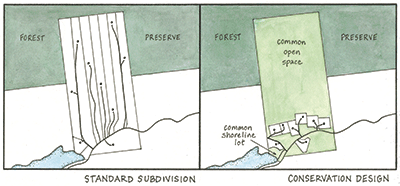 Conservation design legislation is needed to reform the Adirondack Park Agency Act: Protect the Adirondacks is pushing for an amendment to the Adirondack Park Agency (APA) Act to preserve the ecological integrity, wildlife and open space in the Adirondack Park. The bill would strengthen the Adirondack Park Land Use and Development Plan, originally adopted as part of the APA Act in 1973, by incorporating modern conservation design principles to curtail widely scattered exurban development, or “rural sprawl,” in the Adirondack Park. The APA Act has been largely unchanged since 1973.
Conservation design legislation is needed to reform the Adirondack Park Agency Act: Protect the Adirondacks is pushing for an amendment to the Adirondack Park Agency (APA) Act to preserve the ecological integrity, wildlife and open space in the Adirondack Park. The bill would strengthen the Adirondack Park Land Use and Development Plan, originally adopted as part of the APA Act in 1973, by incorporating modern conservation design principles to curtail widely scattered exurban development, or “rural sprawl,” in the Adirondack Park. The APA Act has been largely unchanged since 1973.
Conservation science now recognizes that the spatial pattern of development is fully as ecologically important as its density. Rural sprawl impairs ecosystem function, decreases biotic integrity, alters species behavior and composition, increases human-wildlife conflicts, and undermines the open space character of the Adirondack Park. The greatest threat to the forest products industry in New York is fragmentation of the forest resource into smaller lots and subdivisions because smaller lots will not be actively managed for commercial logging.
This bill would require that these factors be identified and considered for major, large-scale residential subdivisions in Low Intensity, Rural Use and Resource Management areas. The importance of this bill cannot be overstated. It would provide the APA with scientific tools necessary to review and evaluate proposals for large-scale residential development in the most vulnerable areas of the Adirondack Park. Click here for more information on the need for conservation design legislation.
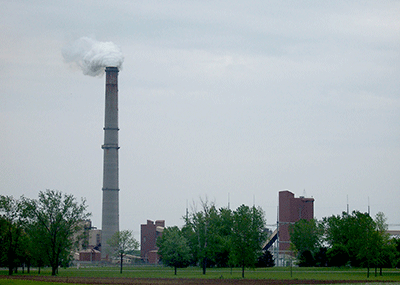 Climate Leadership and Communities Protection Act: In a major step forward for a state government, the New York State Legislature passed the Climate Leadership and Communities Protection Act in 2019. This legislation requires the Department of Environmental Conservation (DEC), and many other state agencies develop and promulgate a “Climate Action Plan” for New York for energy conservation, efficiency, conversion from fossil fuels to renewable energy, and develop new regulations for greenhouse gas emissions reductions in New York. This legislation creates a partnership with a “Climate Justice Working Group” to work with state agencies on planning and decision making to fight climate change. The bill also amends section 54-1523 of the environmental conservation law to make particular technologies eligible in the NYS Environmental Protection Fund. It also makes other changes to state law to require NYS government agencies utilize renewable energy. The New York State Climate and Communities Protection Act also requires a study from the NYS DEC about obstacles in the state that prevent or limit conversion to renewable energy sources. Lastly, this legislation mandates that state agencies must consider climate change and clean energy when reviewing projects and issuing permits.
Climate Leadership and Communities Protection Act: In a major step forward for a state government, the New York State Legislature passed the Climate Leadership and Communities Protection Act in 2019. This legislation requires the Department of Environmental Conservation (DEC), and many other state agencies develop and promulgate a “Climate Action Plan” for New York for energy conservation, efficiency, conversion from fossil fuels to renewable energy, and develop new regulations for greenhouse gas emissions reductions in New York. This legislation creates a partnership with a “Climate Justice Working Group” to work with state agencies on planning and decision making to fight climate change. The bill also amends section 54-1523 of the environmental conservation law to make particular technologies eligible in the NYS Environmental Protection Fund. It also makes other changes to state law to require NYS government agencies utilize renewable energy. The New York State Climate and Communities Protection Act also requires a study from the NYS DEC about obstacles in the state that prevent or limit conversion to renewable energy sources. Lastly, this legislation mandates that state agencies must consider climate change and clean energy when reviewing projects and issuing permits.
Climate change impacts all New Yorks in every county in the state. This legislation is vital for making climate change a matter to public urgency for state government. This bill requires that New York not just issue vague goals for greenhouse gas emission reductions of increased use of renewables across New York, but develops a plan for the actual conversion from fossil fuels to renewable energy. The “Climate Justice Working Group” is an important part of this bill because this effort should not be driven exclusively by the Executive and state agencies. The Legislature must be able to appoint members to the state’s planning effort to ensure public accountability. Protect the Adirondacks supported this legislation. Click here for PROTECT’s memo in support and click here for PROTECT’s testimony made to the Senate/Assembly Conservation Committees on climate change legislation.
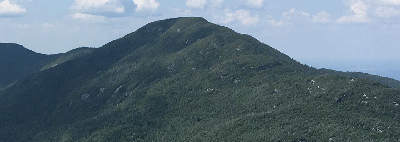 The right to a clean environment: This legislation received “first passage” of an amendment to the NYS Constitution in 2019 and will seek second passage in 2021. This amendment would amend Article 19 of the NYS Constitution to add a new section 19 to read as follows:
The right to a clean environment: This legislation received “first passage” of an amendment to the NYS Constitution in 2019 and will seek second passage in 2021. This amendment would amend Article 19 of the NYS Constitution to add a new section 19 to read as follows:
§ 19. Environmental rights. Each person shall have a right to clean air and water, and a healthful environment.
Protect the Adirondacks strongly supported this change to propose for the people of New York State a new constitutional amendment that provides for all New Yorkers the right to clean air and water, and a healthful environment. After second passage is secured in 2021, then this amendment would be placed on a the November 2021 statewide ballot.
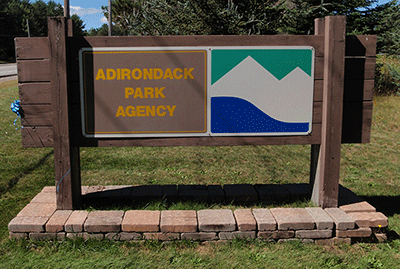 Reforms are badly needed at the Adirondack Park Agency: At the end of the 2019 Legislative, the State Senate chose not to act on four names submitted by Governor Andrew Cuomo for nomination to the NYS Adirondack Park Agency (APA) Board. At the time, Adirondack conservation and environmental groups applauded the Senate for standing firm because these nominations did not represent the broad and diverse interests of the Adirondack Park community and all New Yorkers who are concerned about the management of the Adirondack Park. The Senate’s decision was a bold move, but it needed to be done.
Reforms are badly needed at the Adirondack Park Agency: At the end of the 2019 Legislative, the State Senate chose not to act on four names submitted by Governor Andrew Cuomo for nomination to the NYS Adirondack Park Agency (APA) Board. At the time, Adirondack conservation and environmental groups applauded the Senate for standing firm because these nominations did not represent the broad and diverse interests of the Adirondack Park community and all New Yorkers who are concerned about the management of the Adirondack Park. The Senate’s decision was a bold move, but it needed to be done.
There were two main problems with the Governor’s nominations. First, Adirondack conservation groups had been calling for greater professional diversity on the APA Board. Adirondack conservation groups had called for nominations that included an independent environmental attorney, scientist, and an individual with regional planning experience. Individuals with these qualifications would immensely help the APA Board pursue its mission to balance the conservation and development of the Adirondack Park. Second, this Governor submitted only a partial slate of nominees for the APA Board, preferring to retain other members who were serving expired terms in order to avoid scrutiny by the new Democratic majority. The Governor’s partial slate would have left three other Board members serving in expired terms.
In 2020, Protect the Adirondacks will continue to urge the Democratic majority of the State Senate to hold strong and to demand that members of the APA Board bring a range of professional experiences and undertake their duties with independence. It’s also important that the Governor submit nominations for a full slate to either replace Board members or nominate them for new terms. All members must be fully and publicly scrutinized. It’s vital the APA Board include people with expertise in environmental law, science and regional planning. There is a role and voice for local government officials on the APA, but the Board should not be dominated by local government officials.
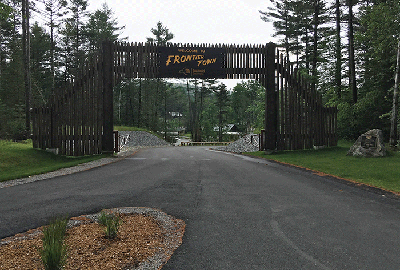 Poor long-term investment at Frontier Town Campground: The new Frontier Town state campground was opened to great fanfare just before the July 4th holiday 2019. The campground is now fully developed with campsites, trails, and amenities such as showers, playgrounds, horse stalls, pavilions, and scenic lookouts on the banks of the Schroon River, among other features. Construction of the new Paradox Brewery is well underway.
Poor long-term investment at Frontier Town Campground: The new Frontier Town state campground was opened to great fanfare just before the July 4th holiday 2019. The campground is now fully developed with campsites, trails, and amenities such as showers, playgrounds, horse stalls, pavilions, and scenic lookouts on the banks of the Schroon River, among other features. Construction of the new Paradox Brewery is well underway.
The Frontier Town Campground is designed to pay homage to the western themes of the old Frontier Town wild west amusement park that was in its heyday in the decades after the Second World War. The amusement park had become dilapidated over the years and the new campground was a State intervention to help restore the site to some form of commercial use. The main gate has a western design and many of the shower and bathroom buildings have western saloon facades. Click here to read more about the Frontier Town Campground.
The Frontier Town Campground cost somewhere in the neighborhood of $25 million. In addition to questions around compliance of associated trails in the Hammond Pond Wild Forest area with the State Land Master Plan there are valid questions about whether this is the best investment of $25 million to help build Adirondack communities and the local economy? It is certainly a shot in the arm for North Hudson, but are campers simply being recruited from other nearby private or state campgrounds? Does this campground help to build local institutions and businesses? What are the long-term costs to the state to maintain it now that the state has slated 5 new permanent employee positions at the campground?
Think of what could have been done to improve management of the High Peaks Wilderness Area with $25 million? Think of the trail work that could have been done on hiking trails? Think of the new High Peaks Information Center that could have been built in Keene Valley? Think about the public education and scientific research about the Forest Preserve that could have been funded? In 2020, Protect the Adirondacks will continue to monitor and comment on state spending priorities in the Adirondacks.
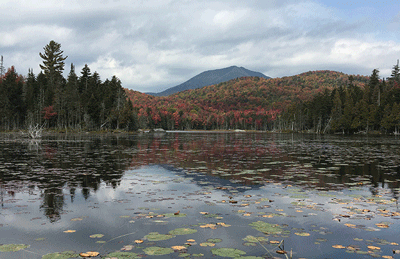 Boreas Ponds is open to the public: Just after Labor Day weekend this year, the Department of Environmental Conservation (DEC) completed its work to fully open up public access to the Boreas Ponds, in the southern High Peaks Wilderness area. These beautiful ponds are now easily accessible for people to either canoe or to hike. New state facilities were constructed over the past two years to rehabilitate the 6-mile-long Gulf Brook Road, build parking lots, public education kiosks, and canoe carries and canoe launches to make this extraordinary natural wonder fully accessible to the public. The reconstructed road and new access points opens up a new southern gateway to the High Peaks Wilderness Area and makes easily reachable one of the most scenic and visually dramatic areas in the Adirondacks. Paddling through the network of three inter-connected Boreas Ponds gives one the sensation of paddling through mountaintops.
Boreas Ponds is open to the public: Just after Labor Day weekend this year, the Department of Environmental Conservation (DEC) completed its work to fully open up public access to the Boreas Ponds, in the southern High Peaks Wilderness area. These beautiful ponds are now easily accessible for people to either canoe or to hike. New state facilities were constructed over the past two years to rehabilitate the 6-mile-long Gulf Brook Road, build parking lots, public education kiosks, and canoe carries and canoe launches to make this extraordinary natural wonder fully accessible to the public. The reconstructed road and new access points opens up a new southern gateway to the High Peaks Wilderness Area and makes easily reachable one of the most scenic and visually dramatic areas in the Adirondacks. Paddling through the network of three inter-connected Boreas Ponds gives one the sensation of paddling through mountaintops.
Any time land is added to the Forest Preserve the Adirondacks grows wilder. Protections under Article XIV of the State Constitution require that lands are forever kept as wild forest lands. There’s plenty of great country and wild places that never see a footprint in both Wilderness and Wild Forest areas. In the history of the Adirondack Park, the acquisition of the Boreas Ponds and its classification as Wilderness and inclusion in the High Peaks Wilderness Area will be written as a landmark event, and an important link in the chain between generations that have worked to defend and protect the last great wilderness in the eastern U.S. Protect the Adirondacks campaigned for a wilderness classification for Boreas Ponds. For more information on the Boreas Ponds and how it became part of the New York’s Wilderness lands system click here, here, here and here.
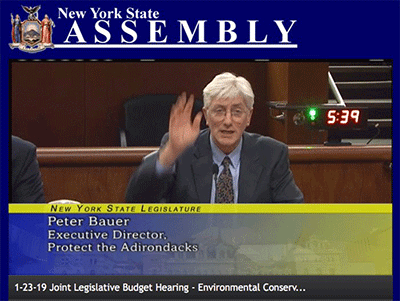 Advocacy for full funding for the NYS Environmental Protection Fund: The NYS Environmental Protection Fund (EPF) has been funded at $300 million for the last three years. This does not meet the environmental challenges facing New York State. Protect the Adirondacks supported a larger EPF in 2019, where the EPF is approved with a schedule to increase to $500 million over the next four years, by 2023, with a future goal of $1 billion. We argued that if New York is going to meet the immense environmental challenges ahead it needs greater resources.
Advocacy for full funding for the NYS Environmental Protection Fund: The NYS Environmental Protection Fund (EPF) has been funded at $300 million for the last three years. This does not meet the environmental challenges facing New York State. Protect the Adirondacks supported a larger EPF in 2019, where the EPF is approved with a schedule to increase to $500 million over the next four years, by 2023, with a future goal of $1 billion. We argued that if New York is going to meet the immense environmental challenges ahead it needs greater resources.
In the EPF, the State Land Stewardship account funds stewardship and maintenance of state lands, including the 3-million acre Forest Preserve, state forests, and wildlife refuges, among others. PROTECT argued for two priorities in the State Lands Account. First, there has been a significant increase in the public’s interest in hiking, biking and visiting the Adirondacks, particularly in the High Peaks Wilderness area. Popular mountains, like Cascade Mountain, are seeing over 40,000 hikers a year, while others like Giant Mountain, Mount Marcy, and Algonquin Mountain are seeing over 30,000 hikers a year. The vast majority of trails in the High Peaks Wilderness need upgrades and repairs from damage from erosion, over-use, and a chronic lack of maintenance. We argued that the EPF needed to include a special line in the State Lands Stewardship category for the High Peaks Wilderness for at least $5 million.
Second, Protect the Adirondacks opposed EPF funding to continue to build new road-like class II community connector snowmobile trails in the Forest Preserve in the Adirondacks. These so-called “trails” are built with heavy equipment that change the terrain, are 12 feet wide and often wider, require cutting of 1,000 trees per mile, remove all rocks, roots, and all native vegetation is removed. These trails are graded flat and planted with grass seed mixes to make a grassy corridor through what had been a wild forest. Moreover, these trails are not used heavily by snowmobilers, who favor existing trails on roads, which are wider and flatter and allow higher speeds. The Legislature should prohibit funding for class II community connector snowmobile trails in the EPF.
We supported the EPF Land Protection account at a level of $50 million to meet the challenges of protecting important natural resources areas across New York. This fund should be at least $50 million. The EPF also needs a new category for research that focuses on the natural resources and the relationship between people and the environment in New York. This fund would need to create some form of review and administration function within the Department of Environmental Conservation and other agencies with Legislative review and approval. Environmental research should be funded at $5 million annually in the EPF. Good science makes good policy. New York State should invest in environmental research across the state to identify critical problems and to help fund solutions. Click here to read PROTECT’s budget testimony.
Protect the Adirondacks is very grateful to our members and supporters. Click here if you would like to make a donation to Protect the Adirondacks. Thank you.

